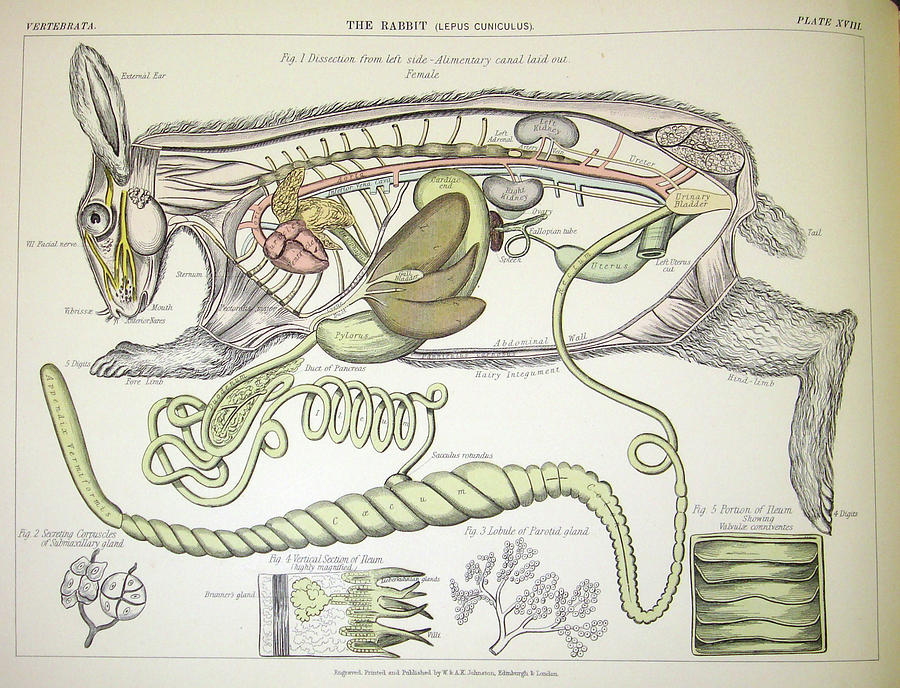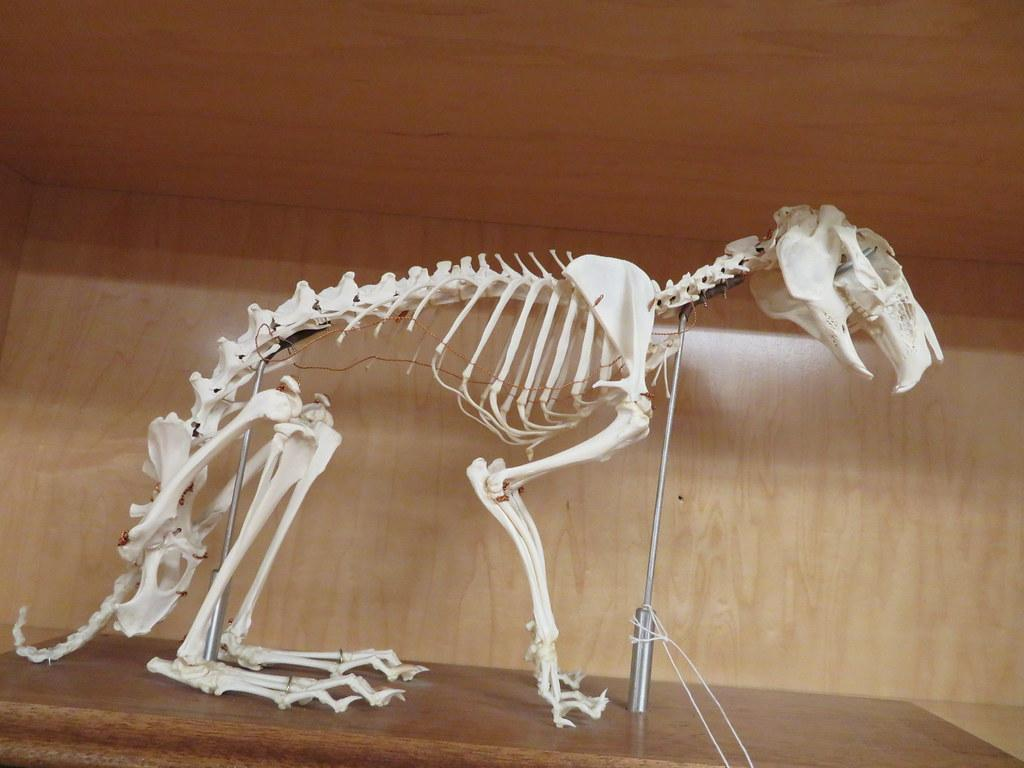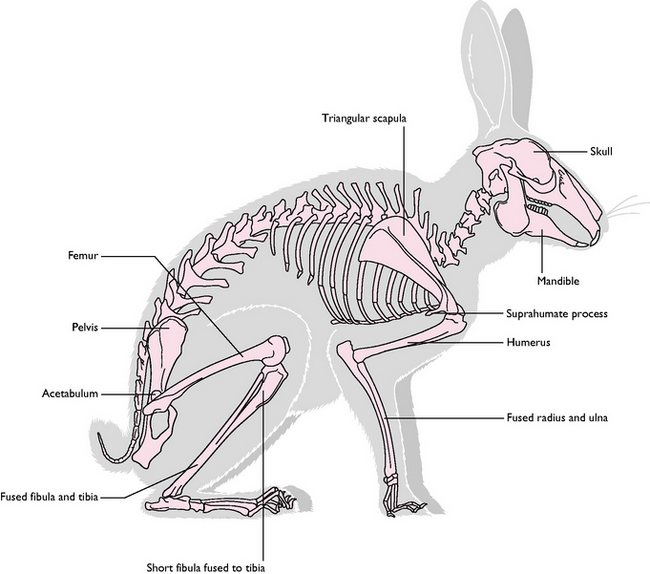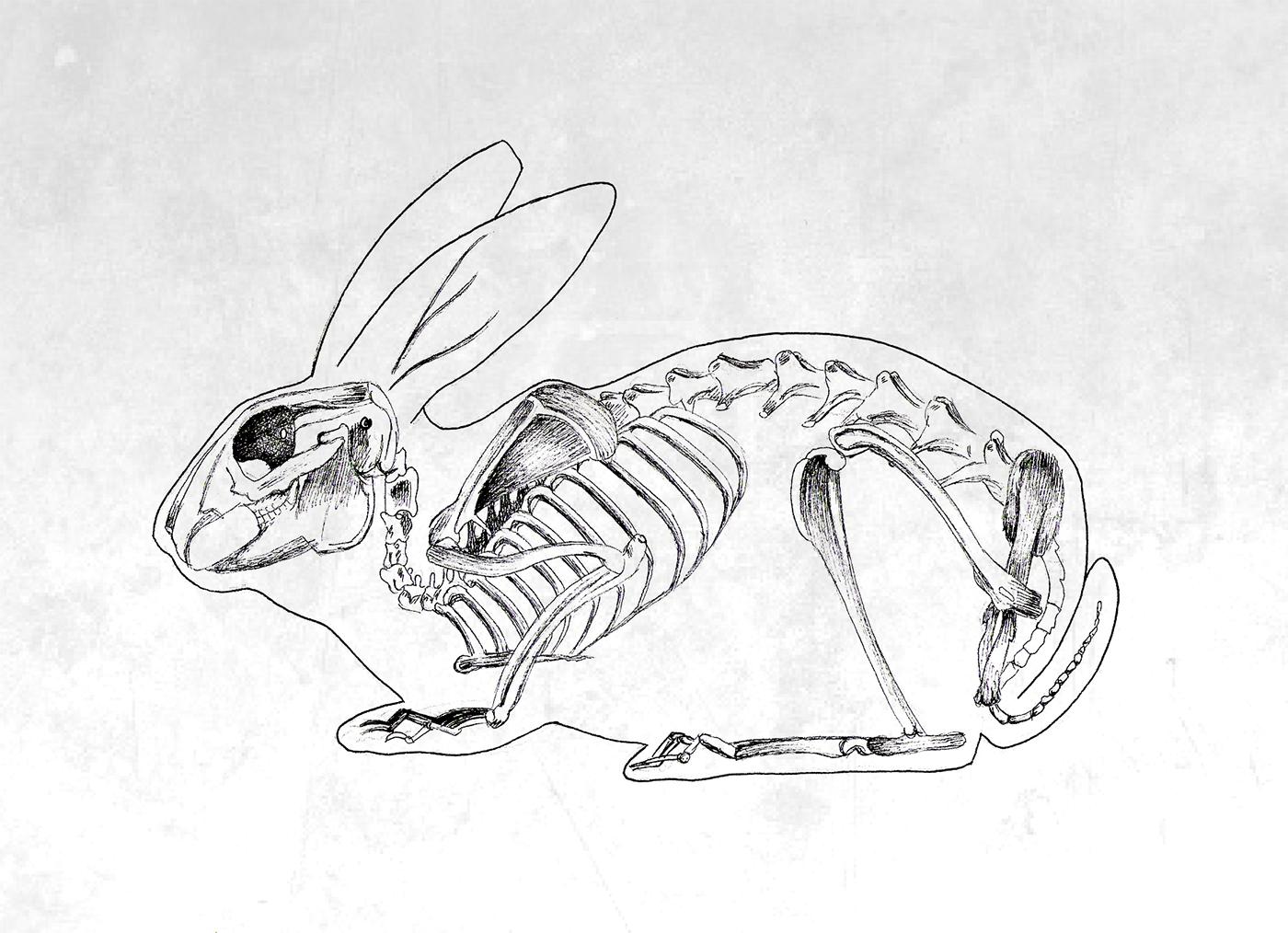
Art Enrichment Lessons Art with Mrs. Lau Animal Skeletons, Animal
Part of LafeberVet's Rabbit Basics Teaching Module, the Rabbit Anatomy Basics slideshow is a 22-minute recording designed to impart a basic understanding of rabbit anatomy for the veterinary technician and veterinary nurse.

skeletal rabbit anatomy
Nose A r abbit's nose has sensitive whiskers. These whiskers help them to breathe easier by adjusting the exchanges of air. They also regulate the inhaled air flows and heat. Through their nasal mucosa, they can easily detect chemicals. The morphology of rabbits' noses directs how the air flows in and out of their lungs.

Anatomy Of The Rabbit Anatomical Charts & Posters
In rabbits, the skeleton is very light weighted and brittle which contributes only 7-8% to total body weight . But the bones have a higher content of calcium, whereas the muscle mass accounts for half of the body weight. The skeletal system consists of the axial skeleton and appendicular skeleton . The axial skeleton of the rabbit is composed.

the skeleton of a rabbit is shown in this diagram, with labels on its body
AnatomyStuff 330 subscribers 4 698 views 11 months ago Learn the names and placements of a rabbit's internal organs with our new video. Discover more with our free resources section on our.

Parts of the Rabbit skeleton
The endoskeleton of rabbit is chiefly formed of bone and cartilaginous part is very little. Exactly like those of other vertebrates, the skeleton of rabbit can also be divided into two parts: (i) The axial skeleton is present along the longitudinal axis of the body and consists of the bones of skull, the vertebral column, the ribs and the sternum;

Rabbit Skeleton on white background, 3d rendering Stock Photo Alamy
Rabbits have two pairs of incisors in the maxilla, and one pair in the mandible which has enabled zoologists to clearly distinguish between rabbits (and lagomorphs in general), and rodents that only have one pair in the maxilla and one pair in the mandible.

Rabbit Anatomy Photograph by Natural History Museum, London/science
A rabbit skeleton is a complex and resilient structure composed of bones, joints, and ligaments that provide the framework for the body. It is lightweight yet strong enough to support and protect vital organs such as respiration, circulation, and locomotion. The vertebral column, ribs, pelvic girdle, forelimbs and

Scientific Illustration Rabbit skeleton, Skeleton anatomy, Rabbit anatomy
There are 23 types of bones that make up a rabbit's skeleton: Cranium, scapula, spine, fibula, tibia, femur, ilium, sacrum, caudal vertebrae, calcaneus, tarsus, metatarsus, phalanges, ulna, ribs, radius, carpus, metacarpus, sternum, cervical vertebrae, atlas, mandible and maxilla. Composition

4.12 shows the rabbit skeleton. The bones used in this study were the
The rabbit's skeleton is delicate in relation to its size. The skeleton makes up approximately 8% of their body weight in comparison to a cat, whose skeleton repre-sents 12-13% of its body weight (Cruise and Brewer, 1994). Strong epaxial muscles in the presence of a rela-tively weak lumbar spine predisposes rabbits to frac-

Total number of bones in appendicular skeleton of rabbit is(A) 128(B
Domestic rabbits, Oryctolagus cuniculus, belong to the order Lagomorpha, and their ancestors are from Western Europe and northwestern Africa. 1, 2 Unlike rodents, lagomorphs have a second set of maxillary incisors directly caudal to the first set.

Mammals Veterian Key
Husbandry Etymology The mammalian order Lagomorpha consists of two living families: Leporidae (rabbits and hares) and Ochotonidae (pikas) (Fig. 12-1). The scientific name for the Old World or European rabbit from which all domestic breeds originate is Oryctolagus cuniculus.

Rabbit Description, Species, & Facts Britannica
Natural history. While the European rabbit is the best-known species, it is probably also the least typical, as there is considerable variability in the natural history of rabbits. Many rabbits dig burrows, but cottontails and hispid hares do not.The European rabbit constructs the most extensive burrow systems, called warrens. Nonburrowing rabbits make surface nests called forms, generally.

Rabbit skeleton on Behance
Figure 1. Body planes and directions. Safety Wear safety glasses or goggles, gloves, and a lab apron when dissecting the specimen. Perform the dissection only on the dissection tray. Follow proper hygiene practices before, during, and after the lab. External Anatomy Lay your specimen on its ventral surface. Examine its exterior carefully.

Rabbit Skeletal Structure Diagram Quizlet
Parts of the Rabbit skeleton It is important to learn the skeletal anatomy of a rabbit to understand where the bones are in relation to the external anatomy. You also should know the skeletal structure to be knowledgeable about what bones you are feeling when examining a rabbit. Knowing the skeletal anatomy can help you select better rabbits.

Full Color Art Paper Laminated Skeleton Of Rabbit For Zoology Chart
12/05/2023 14/05/2021 by Sonnet Poddar You will find many variations on rabbit anatomy in comparison to ruminant or equine. In this article, I will discuss the detailed anatomy of rabbits. You will get the essential features of the skeleton, muscles, internal organs, and other organs from the male and female rabbit.

Rabbit Skeleton anatomy 3D rendering Stock Photo Alamy
A rabbit's skeleton is delicate compared to its muscle mass. Rabbits' body weight is between 7-8 percent skeleton and more than 50 percent skeletal muscle. For comparison, a cat's skeleton comprises between 12-13 percent of body weight.. The rabbit digestive system is sensitive and requires a delicate balance for them to absorb the.